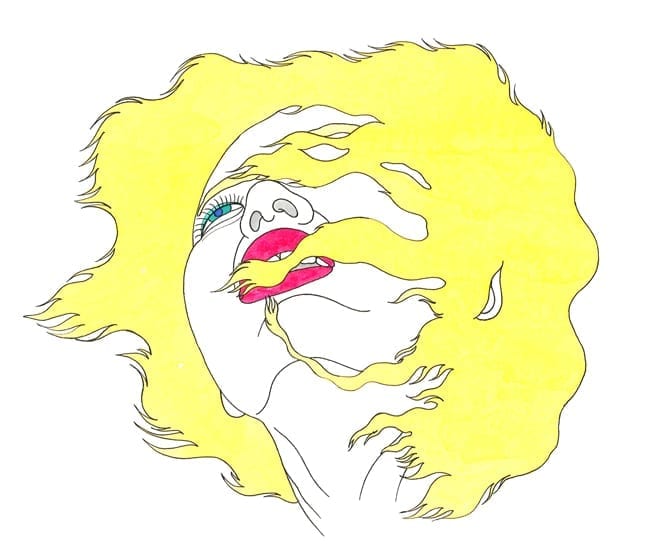“I have never thought of myself as a pop artist. However, when I was young there was a time when I was influenced by the methodologies and techniques of pop artists, such as Warhol.”
Excerpt from Artist Interview: Keiichi Tanaami, Tate, September 2015
Was ‘pop art’ a term used by yourself or colleagues or was there different terminology that referred to a new figurative art movement in the 1960s and early 1970s?
I think the term pop art was a very common term and anybody interested in art knew about it. Around the same time, in Japan there was an art movement called ‘anti-art’ (hangeijutsu) and artists who deviated from traditional art criteria were creating turmoil in the world. In comparison, pop art was easy to understand and it was associated with a modern, urban image – it was popular.
Did you ever consider yourself (now or in the past) a pop artist?
I have never thought of myself as a pop artist. However, when I was young there was a time when I was influenced by the methodologies and techniques of pop artists, such as Warhol. Therefore I was perhaps categorised as a pop artist.

© Keiichi Tanaami
“My uncle left a very big collection [of images] and as a child one of my favourite things to do was to steal into the warehouse where they were stored and play with them.”
Did your work engage with current events in the 1960s and early 1970s?
The 1960s were a decade full of stimulus and adventure. All at once, many traditional values and meanings were denied and it was an era which revolutionised all fields drastically: it engulfed politics, society, culture etc. and marched towards endless opportunities. I was also influenced by the trends of this decade and its festive atmosphere surely changed me. At the time, I was particularly engaged in the creation of experimental films. My experimental films began from being inspired by Kenneth Anger and Jonas Mekas and then they shifted to animation. In 1966, I felt strongly against the principle of one original image and created a work, Portrait of Tanaami Keiichi, a work of ‘mail art’, which was directly sent to people who I wanted to show it to. It is an artist’s book, in which a number of art media were mass-produced.
Where did you get your imagery from (what, if any, sources did you use)?
My uncle left a very big collection [of images] and as a child one of my favourite things to do was to steal into the warehouse where they were stored and play with them. Even now I remember very well the film magazines from before the war, maniac postcards or film posters of Jean Harlow in artificial colours. There was especially an overflow of things which were linked to war and these difficult times. I also often used this material in the collage works that I made in the 1960s.
EXPLORE ALL KEIICHI TANAAMI ON ASX
(All rights reserved. Text @ Tate. Images @ Keiichi Tanaami.)






